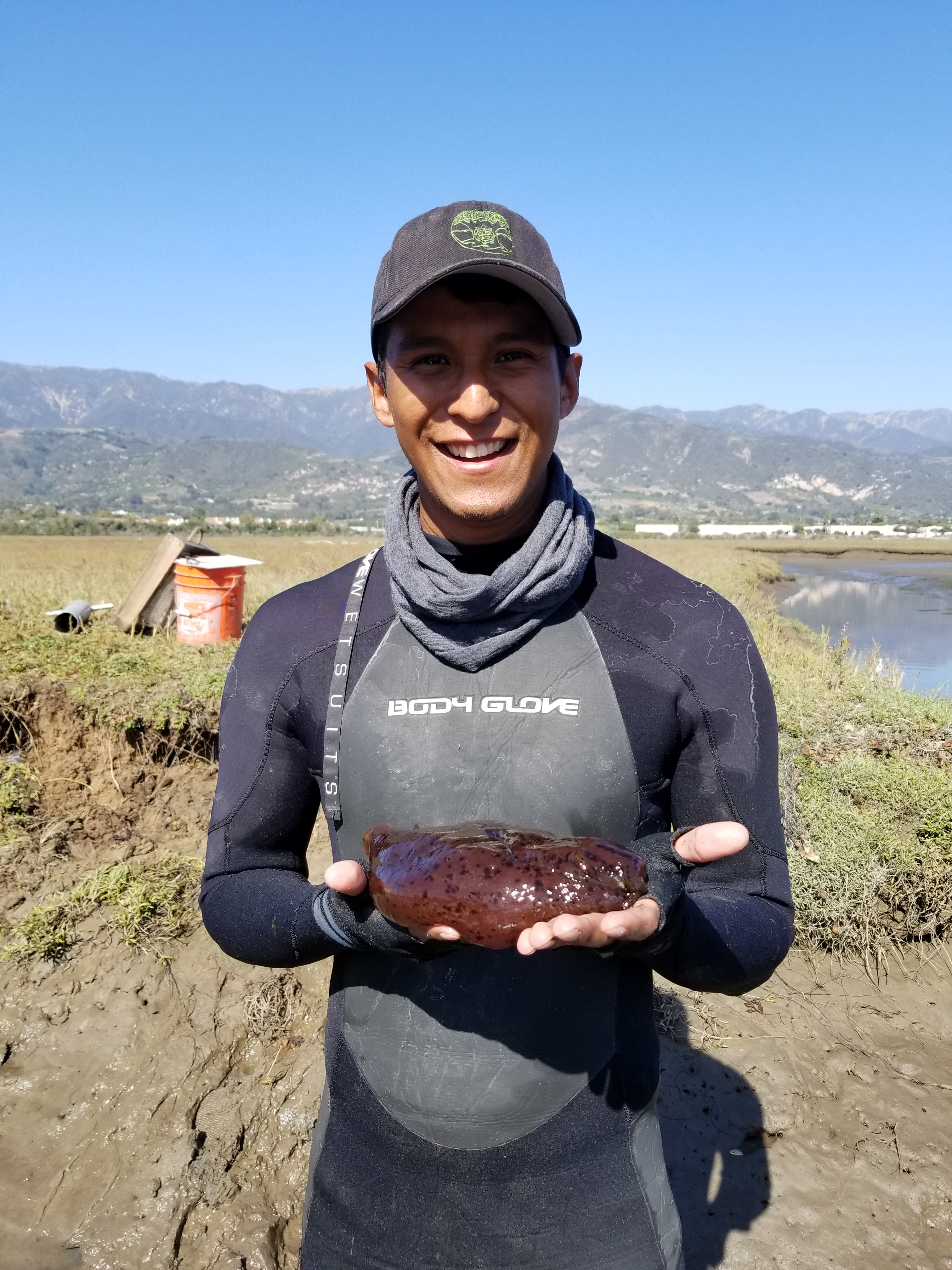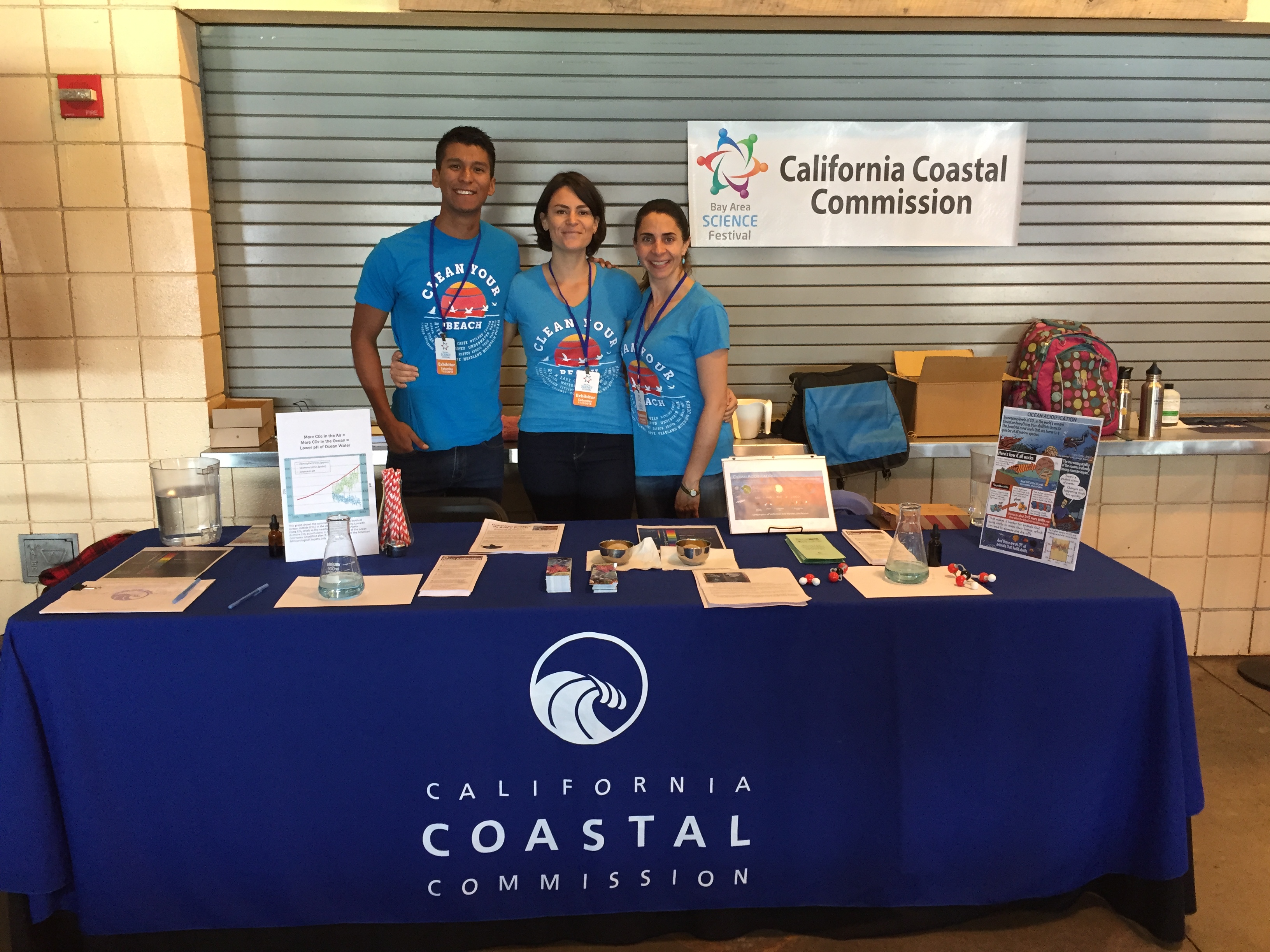August 12, 2019
Erik Martinez was a California Sea Grant State Fellow in 2018 with the California Coastal Commission. His broad background and personal experience, prior to the start of his fellowship, allowed him to expand the type of work that he accomplished, and excelled at, with the commission. This included a redraft of a pre-existing environmental justice policy to ensure that the commission makes environmental justice and social equity a priority moving forward. He is now a planner and assists with permitting at the Coastal Commission, in addition to his work with environmental justice.
Tell me about your background prior to your fellowship.
My experience was all over the place before I landed the California Sea Grant State Fellowship position with the California Coastal Commission. I was actually in computer engineering before I got started in the environmental field. From there, I went from a research station working on climate science research, to sustainability and education initiatives, and then to pollution prevention with the Santa Ynez Band of Chumash Indians.

Those experiences led me to graduate school at the Bren School of Environmental Science & Management, where I focused on desert tortoise restoration. In addition, I took part in the Environmental Fellows Program at the University of Michigan, which aims to diversify the environmental field and began my journey with more coastal related issues.
I applied for the California Sea Grant State Fellowship, and to be honest, I felt like I stuck out like a sore thumb. Everyone’s presentation had something to do with how they loved scuba diving, fish, and so on. I, on the other hand, was afraid of the ocean, scared of fish, and could barely swim. I only took up scuba diving to get over my fear and learn to swim.
What is the California Coastal Commission, and what does it do?
The California Coastal Commission is an environmental regulatory state agency. It regulates development along the coast, and is responsible for reviewing permits, while working closely with local governments to ensure that projects occurring in coastal regions are done in a healthy manner for the environment, while still allowing for public access.
How did you become interested in pursuing environmental justice issues?
I am a first-generation student from a border town in South Texas. I never saw myself, or considered my home as a low-income community. Yet, my home was positioned next to a highway and right behind a sewage plant. My whole life, I had no idea these environmental hazards were deemed environmental injustices.
When I entered into the environmental field, I began to learn about the issues surrounding social equity, equality and environmental justice, and it started to feel more and more personal to me. I was learning about people in similar situations to me and the community I was raised in. Now that I have an education, and more specifically a job with the Coastal Commission, my goal is to understand and uplift the concerns of people in marginalized communities, and help them push back against negative consequences of hazardous development within these areas. I am utilizing my position to give people a bridge to our agency, provide early and meaningful opportunities for them to express concerns, and propose ways of moving forward.

What does environmental justice mean to you?
To me, it means that everyone has access to clean water, healthy air quality, and to the coast, and more specifically, that development will not disproportionately impact low-income communities and people of color.
What was your role in the environmental justice policy at the Coastal Commission?
When I started at the commission, the environmental justice policy was a work in progress, and my co-workers had laid a lot of the groundwork. I helped proofread the pre-existing draft, and played a critical role in stakeholder engagement and outreach to the public. I ensured that we were communicating with stakeholders all across the state, while engaging with different groups to make sure that the information was understandable. I created informational handouts, an interactive story map, redesigned our webpage, and developed other creative ways to spread the information. At the same time, we were also obtaining feedback from the public and stakeholders to strengthen the policy’s redraft.

One of the biggest barriers to participation is the government terms and jargon that most people don’t understand and also a lot of distrust in government from many communities living with environmental injustices. Our team had to first acknowledge that the general public has their own issues with the Coastal Commission, and then assess the priorities for various groups and how to address those problems moving forward. We traveled around the state to speak with stakeholders and work with them to redraft the environmental justice policy. After multiple public comment periods, drafts, and meeting with stakeholders, the commission unanimously adopted the final draft of the environmental justice policy on March 8, 2019.
What has your experience been working for this agency?
I went from being in the field — catching fish, counting worms, and riding on dune buggies surveying piping plover chicks — to sitting down at a desk all day reading endless files. It was rough at first, but the more I learned the process, the more I understood that it would take a while to settle in. One thing I have tremendously enjoyed is that everybody at the commission loves their job and is very knowledgeable, which makes them great resources for when I needed clarification or guidance.
In terms of work, it is crazy to think how much thought goes into regulating certain projects, and how many things along the coast are regulated. Every section of the coast, whether it be a city or county, has their own set of regulations, so there is a lot to learn about different regions in the state.
How do you hope that this work will change how things are done at the Coastal Commission, and at the state level?
There is definitely a push for change in California, and most of the state agencies are trying to diversify because there is a lack of representation. The Coastal Commission along with the State Lands Commission, and a few other state agencies, are involved in the Government Alliance on Race and Equity California’s Capitol Cohort to talk about diversity, and incorporate it deeper into our agencies and the practices that we do.
The leadership in our agency is very supportive, and we have staff throughout all of our district offices that are trained to help implement these initiatives. We are looking to incorporate environmental justice as one of the main action items when we review projects, as well as in the outreach phase.
There are many plans in place, and change is happening — but it is going to be slow. Trying to change a state agency will not occur overnight. From my previous positions, and personal experience, I know what needs to get done, but since we are underfunded and understaffed, there is not enough time to go door to door to get all of these items accomplished.
A big portion of diversifying, and doing it right, is to establish relationships with people. This is where it gets difficult, because historically, it has been more transactional. Instead, we need to change the way that state agencies interact with the public and establish trust. Our agency consists of predominantly white people, which does not represent California’s demographics. That’s why we are trying to diversify our practices and our hiring process. If our employees are more representative of California’s overall population, then we will have more diverse perspectives on issues and projects that the commission tackles.
Learn More:
Environmental Justice & Social Equity at the California Coastal Commission
###
Interview conducted and edited by Tayler Tharaldson, California Sea Grant Science Communication Fellow 2019.




